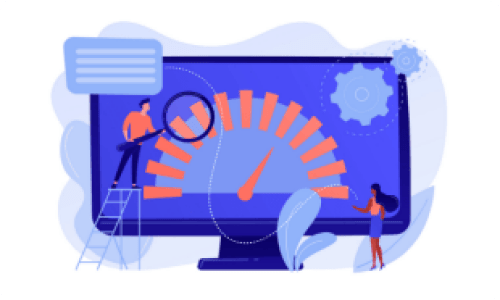For the best results with your WordPress platform, you should always focus on optimizing the website’s speed. According to Akamai’s Digital Performance report:
- 49% of users anticipate a 1 second page loading time.
- 30% of users expect less than a 1 second page loading time.
- 18% of users expect an instant page loading time.
If your eCommerce store is built on WordPress using WooCommerce, then you should absolutely recognize that 79% of online shoppers wouldn’t return to a website if they’ve had trouble with loading speed. As such, we’ve outlined a few tips to improve your WordPress website’s loading speed (and hopefully retain more customers).
1. Update to the Latest Version of PHP
First of all, we highly recommend that you update your PHP to the latest version to improve the speed of your website. You can use WP Engine’s PHP Compatibility Checker plugin to identify your website’s current PHP version. Moreover, you can update it on your own simply by visiting your user portal.
There are plenty of other eCommerce plugins available for WordPress that you can also use to sell goods, services, and more, but among them, WooCommerce stands out. WooCommerce is the most popular eCommerce plugin for WordPress, allowing users to turn their websites into easy online stores. It lets you choose from various payment gateways, product display layouts, and shopping cart configurations to do business locally and globally.
2. Optimize Image Sizes
Your webpage gets bulky with bigger images on it. As such, you must standardize all images and optimize them without compromising their quality. Fortunately, you can optimize images with help from a professional graphic designer and using suggestions from the Chrome PageSpeed Insights extension. However, that’s not necessarily the quickest method. WordPress offers a plethora of plugins that are specifically dedicated to image optimization. Below are some of the most highly-rated plugins available in the WordPress plugin marketplace:
- Optimole
- WP Smush
- EWWW Image Optimizer
You can choose any plugin that is compatible with your other installed plugins. This simple change can help optimize your website loading speed drastically.
3. Minimize JS and CSS Files
With help from Google PageSpeed Insights, you can analyze your website for speed optimization. In the report, you might also find a suggestion: minimize the size of your CSS and JS files. This means that Google is suggesting you should lighten the size of CSS and JS files and reduce the number of calls to improve the website’s loading speed. If you know how WordPress themes are built, you should be able to easily understand Google’s guidelines and work on the theme for a better loading speed. Alternatively, you could also leverage WordPress plugins, such as Autoptimize, to minimize the CSS and JS files.
4. Implement Advanced Caching Mechanisms
Another way to speed up your website is to use suitable WordPress caching plugins, such as the W3 Total Cache. It’s available in the WordPress marketplace and is one of the older, most trusted tools for caching management. This handy tool helps with adding caching rules to your website elements. Coupling the plugin with Varnish (an advanced caching mechanism) can also help you further improve your website speed.
5. Use a CDN
Establishing an internet presence for your business gives you the advantage of attracting a global audience. Hence, your website’s loading speed will inevitably vary for users from different locations. For example, let’s assume you have hosted your website in the US, and a user wants to visit your website from Singapore. Naturally, the site’s loading speed will be slower for Singapore users.

To effectively counterbalance this issue, you could leverage a CDN (Content Delivery Network) to cut the site’s loading speed for foreign visitors. In a nutshell, the core purpose of a CDN is to deliver the web content to a visitor from the nearest possible server location. Some of the most reputed and reliable CDNs include Cloudflare and MaxCDN.
6. Cleanup WordPress Database
Periodical cleaning of unwanted data from your WordPress database can help you maintain your site’s size and keep things to a minimum, thereby helping you to reduce the size of your backups. In addition, you should always attempt to monitor fake users, remove spam comments, old drafts of web pages and blogs, and underused plugins and themes. All these efforts collectively help you enhance the performance of your WordPress website.
7. Deactivate or Uninstall Plugins
When you download a plugin and activate it on your website, it will occupy space on your database. Even after deactivating it, the plugin will still take up space in your database, staying dormant. As a result, even deactivated plugins can slow down your WordPress website. So, it is essential to remove those plugins from your website and embrace alternate solutions from third-party services for automating and scheduling tasks. This also includes sharing your latest blog posts on social media as well. Zapier and IFTTT are several excellent web services that deliver the best-in-class automation of tasks while mitigating the load on your website and server resources.
8. Keep External Scripts to a Minimum
When it comes to optimizing the user experience, CRO, and your website sales, you may want to seek help from specialist monitoring tools, Google Webmaster Tools, and third-party chat tools. As a result, the use of external scripts could increase on your website. Naturally, integrating monitoring tools can slow down your website and adversely impact the final loading time. So, always identify the required tools to accomplish your missions, choose the right alternative, and implement only that which is required.
9. Lazy-Load Long Pages
When you have a lot of information on your homepage, or if your pages are graphically heavy, Lazy Loading could be your savior. Lazy Loading instructs the browser to read and load only the content and images visible in the current viewport. Any other graphics or content lying below the viewport will not be read or loaded in by the browser; instead, these begin loading when the user scrolls down. In this way, it’s much easier to achieve the SEO metric, “First Contentful Paint,” without the hassle.Lazy Loading is easy to implement by installing the BJ Lazy Load plugin.
Wrapping up
There are three critical reasons that your WordPress website might be loading slowly:
- It enhances the user experience
- It improves the search rankings
- It increases the organic website traffic
Whether users are accessing your website from a mobile device or a laptop, your website needs to perform seamlessly for all users and deliver a memorable and hassle-free experience. By implementing the above-mentioned best practices, you can easily improve your website performance and organic traffic overall.
For further details and queries, feel free to send an email to info@engagebranding.com.



